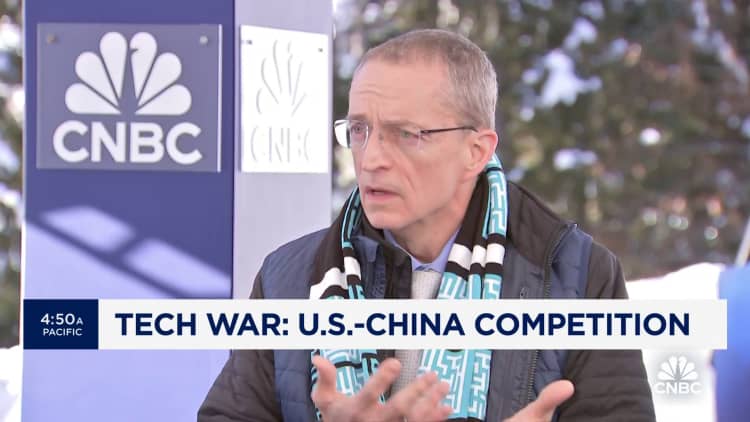
On December 4, 2020, in Beijing, China, a sign was hung on the building of SMIC Beijing Branch.
VCG | Visual China Group | Getty Images
China’s largest chip manufacturer SMIC has now become the world’s third-largest foundry in terms of first-quarter revenue. based on counterpoint studies.
state-backed SMIC, or Semiconductor Manufacturing International CorporationThe report shows that the market share in the first quarter was 6%, higher than last year’s 5%. it goes beyond GlobalFoundries and Taiwanese Lianhua Electronics Corporation.
This leaves SMIC trailing only British Semiconductor South Korea’s Samsung OEM accounted for 62% and 13% of the market respectively in the first quarter.
SMIC’s quarterly results exceeded market expectations. As demand for CIS, PMIC, IoT and DDIC applications in China begins to recover, SMIC’s wafer foundry revenue market share in the first quarter of 2024 ranked third for the first time. Published Wednesday.
The chips manufactured by SMIC are widely used in automobiles, smartphones, computers, Internet of Things technology and other fields.
SMIC reported first-quarter revenue of US$1.75 billion, up 19.7% year-on-year as customers stocked up on chips. The company said in its financial report that more than 80% of its revenue this quarter came from Chinese customers. earnings report.
Due to strong demand, the Chinese company expects second-quarter revenue to grow 5% to 7% compared with the first quarter.
China consumes nearly 50% of the world’s semiconductors as it is the largest consumer device assembly market, according to technology consultancy Omdia.

SMIC is seen as key to Beijing’s hopes of reducing the domestic semiconductor industry’s reliance on foreign technology as the United States continues to curb China’s technological prowess. To boost domestic manufacturing, Beijing has provided billions of yuan in subsidies to chip companies.
SMIC has been the target of U.S. sanctions since 2020, and U.S. companies must apply for a license before selling products to SMIC, limiting its ability to obtain certain U.S. technologies.
It also doesn’t have access to extreme ultraviolet lithography machines – only Dutch company ASML has the capability to build them. Without EUV machines, SMIC would not be able to mass-produce high-tech semiconductors at a lower cost.
Chinese tech giant Huawei’s Mate 60 Pro smartphone launched last year suffers glitches, hitting U.S. sanctions disclose It runs on a 7nm chip manufactured by SMIC. The smartphone also appears to support 5G connectivity, despite U.S. attempts to block Huawei from using key technologies including 5G chips.
However, analysts said SMIC still lags behind TSMC and Samsung Electronics.
TSMC and Samsung began mass production of 7-nanometer wafers in 2018 and currently produce 3-nanometer wafers—the smaller the nanometer size, the more advanced and efficient the chip.






